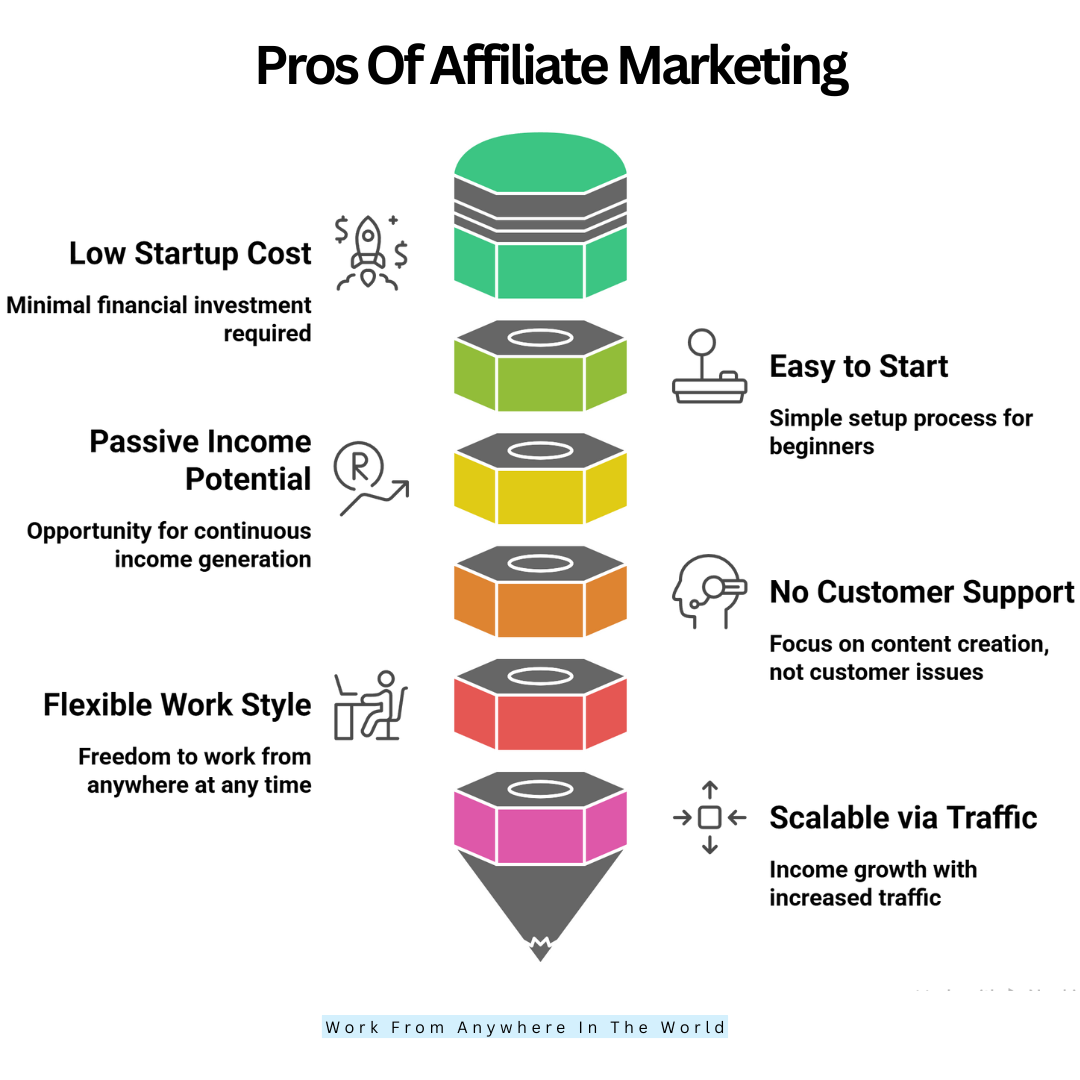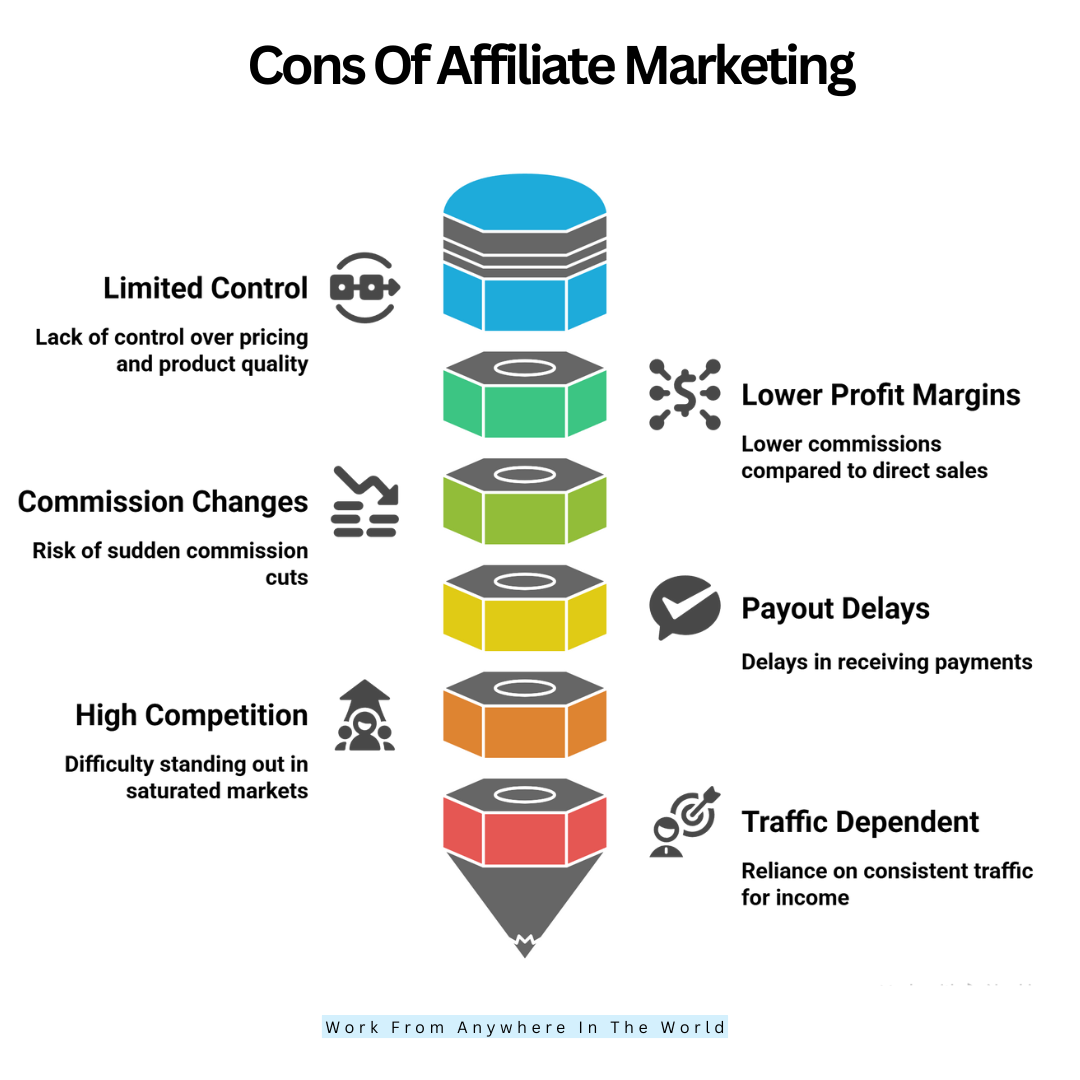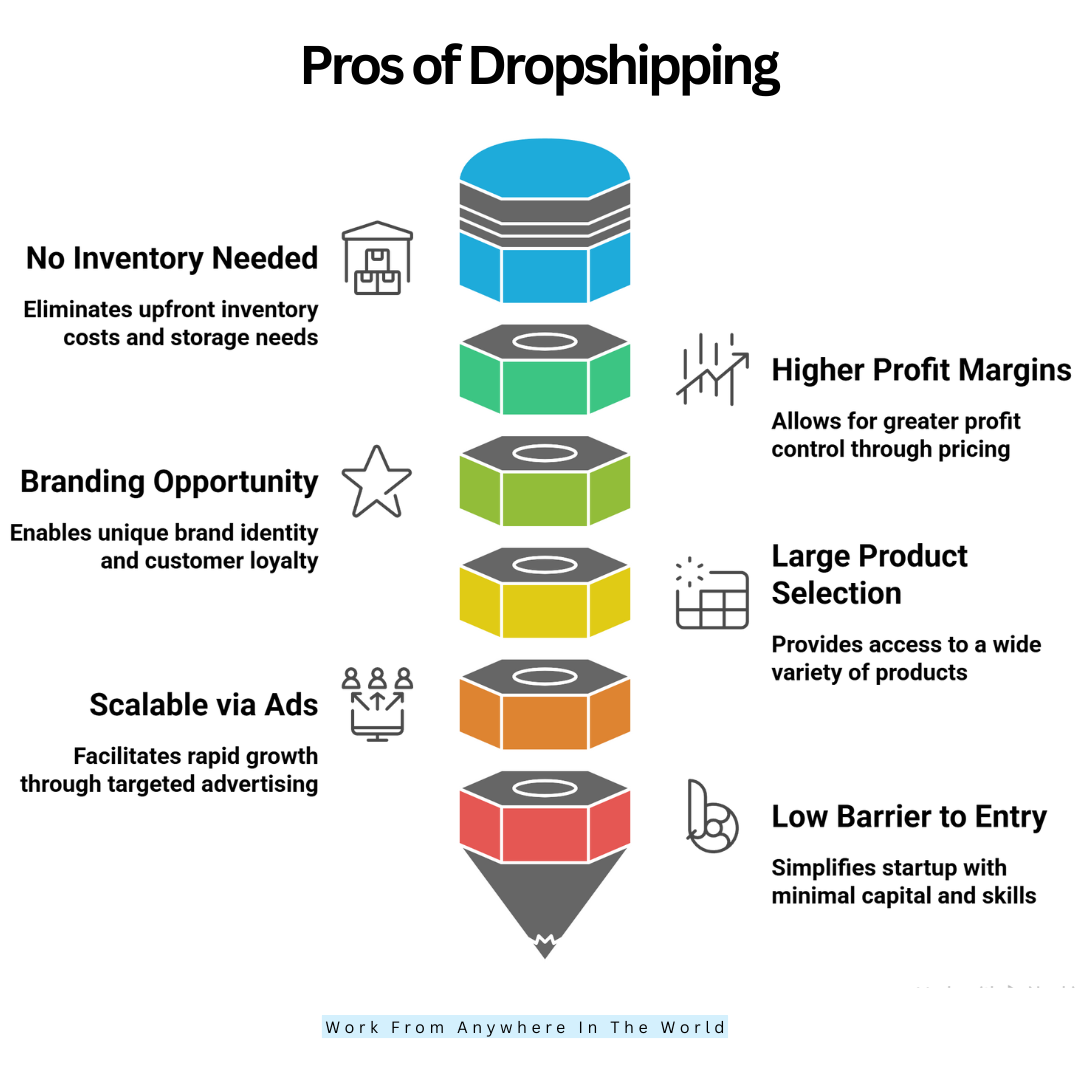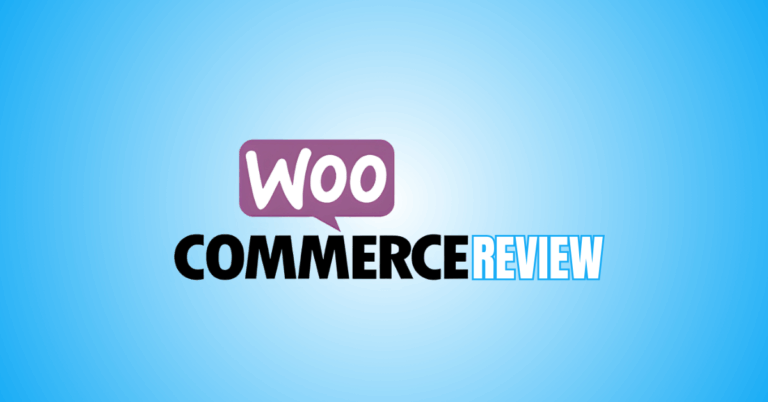Affiliate Marketing Or Dropshipping
Choosing between affiliate marketing or dropshipping can be challenging for anyone starting an online business. Both models offer unique advantages and potential for profit, but understanding which fits your goals is key.
In this blog, we’ll explore the benefits, challenges, and opportunities of affiliate marketing or dropshipping for you to start your path to success and financial freedom by making an informed choice.
Affiliate Marketing Or Dropshipping: Find The Right Business Model To Thrive
What Is Affiliate Marketing?
Affiliate marketing involves promoting another company’s products or services and earning a commission for each sale made through your referral link. You don’t own the product, manage inventory, or handle customer service.
In order to increase traffic to affiliate links, you instead produce content such as blogs, YouTube videos, or social media postings. When someone clicks on your link and makes a purchase, you get paid a percentage of the transaction.
This model is popular for bloggers, influencers, and content creators because it focuses on marketing, not product fulfillment or logistics.
What Is Dropshipping?
A third-party supplier stores, packages, and ships the goods straight to your customers when you sell them online using dropshipping, a retail fulfillment technique.
You act as the middleman: listing products, collecting orders, and forwarding those to the supplier. You control pricing and profit margins but don’t need to hold inventory.
This model is attractive for eCommerce entrepreneurs who want to run a business without investing heavily in stock. It’s common on platforms like Shopify and WooCommerce.
Pros And Cons Of Affiliate Marketing
Affiliate marketing or dropshipping offer distinct paths to online income. You can select the affiliate marketing strategy that best suits your lifestyle and business objectives by being aware of its benefits and drawbacks.
Pros Of Affiliate Marketing
1. Low Start-Up Cost
Affiliate marketing is highly cost-effective, requiring minimal financial investment to get started. Unlike traditional businesses, you don’t need to purchase inventory, create products, or manage shipping and fulfillment.
Your main expenses might include a domain name, website hosting, and some marketing tools, which can often be under $100 annually.
This makes affiliate marketing accessible to beginners or those with limited funds. For example, someone starting a blog or YouTube channel can promote Amazon products without upfront product costs.
In the US, affiliate marketing expenditures are reported by Statista. Alone were $8.2 billion in 2022, showing its growing importance with low barriers.
2. Easy To Start
Affiliate marketing is easy to start and suitable for beginners. To sell products, anyone with rudimentary computer abilities may create a website, blog, or social media profile.
Joining affiliate programs is usually free and requires no special qualifications. Popular platforms like Amazon Associates, ShareASale, and ClickBank provide easy access to thousands of products across niches.
For instance, a beauty blogger can join multiple cosmetic affiliate programs quickly and start sharing product reviews or tutorials. This ease of entry makes affiliate marketing a common first step into online entrepreneurship for many people.
3. Passive Income Potential
Affiliate marketing offers a compelling opportunity for passive income. Once you create high-quality content like blog posts, videos, or social media posts containing affiliate links, that content can generate income repeatedly without additional effort.
For example, a well-ranked blog post titled “Best Budget Laptops 2025” can drive traffic and affiliate sales for years. According to Awin’s 2021 report, 57% of affiliates consider passive income a primary motivation.
This sustainable income source can help diversify earnings and provide financial stability if content is optimized for search engines and social sharing.
4. No Customer Support
Affiliates do not have to deal with customer service, which is handled entirely by the merchant or product seller. This includes handling product defects, shipping delays, returns, and refunds.
For example, if you promote a kitchen appliance and a buyer encounters a defect, they contact the merchant directly—not you.
This significantly reduces operational workload and stress for affiliates, allowing them to focus solely on creating content, marketing, and traffic generation.
This advantage is particularly beneficial for those who prefer to avoid handling complaints or complex logistics.
5. Flexible Work Style
Affiliate marketing offers a highly flexible work environment. Affiliates can work from anywhere globally, set their own hours, and tailor their content to niches they are passionate about.
For example, travel bloggers can promote travel gear, airlines, and hotel bookings, working remotely from any location. This flexibility suits people looking for part-time income, digital nomads, or those balancing family responsibilities.
Because you’re not tied to inventory or strict schedules, you can create content and promote products at your own pace, making it a lifestyle-friendly business model.
6. Scalable via Traffic
Affiliate marketing income scales with traffic volume and conversion rates. The more people visit your content and click on affiliate links, the more commissions you earn.
For example, a website receiving 50,000 monthly visitors with a 3% conversion rate and an average $20 commission can generate significant revenue. By investing in SEO, social media marketing, and email campaigns, affiliates can increase traffic steadily.
Platforms like Pinterest and TikTok have emerged as primary traffic sources, enabling faster scaling. The key is to build evergreen, high-quality content that continually attracts new visitors.

Cons Of Affiliate Marketing
1. Limited Control
Affiliates have no control over product prices, inventory, shipping, or customer experience since the merchant manages these. This limits your ability to customize offers or differentiate your marketing.
For example, if the merchant raises prices or changes product features, it directly affects your commission and sales potential.
You also can’t control product quality or availability, which can impact your reputation if customers have bad experiences.
This lack of control means affiliate marketing income is dependent on external businesses’ policies and performance, making it less stable than owning your own product.
2. Lower Profit Margins
Compared to selling your own goods, affiliate commissions usually range from 5% to 30%, which means that the profit margins are smaller. For example, promoting a $100 gadget with a 10% commission means earning only $10 per sale.
While volume can compensate, many affiliates struggle to scale to profitable levels. Digital products or software affiliates might earn higher commissions (up to 50%), but physical product commissions are usually slim.
This limits overall earnings potential unless you can generate high traffic and conversions consistently, making income growth slower.
3. Commission Changes
Affiliate programs frequently adjust commission structures or even terminate affiliate accounts without prior warning. A notable example is Amazon Associates, which cut commission rates across categories in 2020, leading to a 50% or more income drop for some affiliates.
This volatility poses a risk if you depend heavily on one program or niche. Affiliates must diversify programs and build multiple income streams to reduce exposure to sudden commission cuts or program shutdowns, which can drastically affect earnings and financial planning.
4. Payout Delays
Affiliate payouts often come with significant delays, commonly between 30 and 90 days after a sale is made. This waiting period exists to account for refunds, chargebacks, and fraud checks.
For example, you may make $1,000 in sales in January but only receive payment in March. For beginners or small affiliates, this can create cash flow issues, limiting the ability to reinvest in marketing or tools.
Some programs offer faster payments, but usually at a cost or with higher requirements. Managing finances carefully to accommodate payout delays is critical.
5. High Competition
Popular affiliate marketing niches such as fitness, technology, or fashion are often saturated with many content creators competing for the same keywords and audience.
For instance, the keyword “best wireless headphones” has millions of competing pages, making it hard to rank and convert. New affiliates must invest considerable time in SEO, content quality, and unique angles to stand out.
High competition can make it difficult to break into profitable niches quickly and can require patience, consistent effort, and sometimes paid promotion.
6. Traffic Dependent
Affiliate marketing income depends heavily on attracting consistent, quality traffic to your content. Without steady visitors, there are no clicks or commissions.
This means constant content creation, SEO optimization, or paid promotion is necessary. For example, seasonal niches like holiday gift guides see traffic spikes only during specific months, causing income fluctuation.
Beginners often underestimate how challenging and ongoing it is to generate and maintain sustainable traffic, which can delay revenue growth and require continuing learning and marketing effort.

Pros And Cons Of Dropshipping
Dropshipping offers low start-up costs, branding control, and flexible product choices, but requires handling customer service and supplier risks. Understanding its pros and cons helps build a successful eCommerce business.
Pros Of Dropshipping
1. No Inventory Needed
Dropshipping eliminates the need to buy or store inventory upfront, which reduces financial risk and logistical complexity.
Only when clients place orders in your store do you buy things from suppliers. Shopify reports that many dropshippers start with under $500 due to this advantage.
This enables business owners to test out various goods and markets without having to worry about overstock or warehousing investments.
For example, a store owner can list thousands of products from AliExpress and test which sell best without holding any stock themselves.
2. Higher Profit Margins
Because dropshippers control product pricing, they can often achieve higher profit margins compared to fixed affiliate commissions.
For example, if you source a product for $10 and sell it at $30, your gross profit is $20, which is a much larger margin than typical affiliate payouts.
This pricing control enables you to optimize for profit, offer discounts, or create bundles to attract customers. Effective pricing strategies combined with supplier negotiations can boost margins further, making dropshipping potentially more lucrative.
Wealthy Affiliate – Mini Review (2025)
If you’ve ever thought about turning your blog, passion, or niche into an online business,
Wealthy Affiliate (WA) is one of the most beginner-friendly platforms I’ve used.
It combines step-by-step training, website hosting, SEO research tools,
and an active community all in one place.
What I like most: you can start free (no credit card needed),
explore lessons, test the tools, and connect with other entrepreneurs
before upgrading. WA isn’t a “get rich quick” scheme — it’s a platform where success comes
from consistent effort and applying what you learn.
3. Branding Opportunity
Dropshipping allows you to build a unique brand with a custom website, logos, and customer experience. Unlike affiliate marketing, where you promote third-party sites, dropshipping lets you create your own identity.
For instance, many dropshippers build niche stores focused on eco-friendly products or pet accessories with tailored messaging and packaging.
Branding increases customer loyalty, repeat purchases, and can justify higher prices. It also creates a business asset that can be scaled or sold later, providing more long-term value.
4. Large Product Selection
Dropshipping offers access to a vast variety of products from many suppliers, enabling quick testing and pivoting. You can list thousands of items from global platforms like AliExpress, Oberlo (Shopify), or SaleHoo, covering electronics, fashion, home goods, and more.
This flexibility helps you identify trending or seasonal products quickly without risk. For example, during the rise of fidget spinners, dropshippers were able to capitalize rapidly by adding these hot items. This adaptability is a key advantage in fast-moving ecommerce markets.
5. Scalable via Ads
The growth of dropshipping is frequently boosted by sponsored advertising on websites like Google Ads, Facebook, and Instagram. Unlike organic affiliate marketing, dropshippers can invest upfront to attract targeted traffic quickly.
For example, many successful dropshippers scale their business by running Facebook ad campaigns tailored to niche audiences, generating rapid sales growth.
While ads require budget and expertise, they provide control over customer acquisition speed and volume, enabling faster scaling than purely organic methods.
6. Low Barrier To Entry
Dropshipping is easy to start since it requires no warehouse, shipping team, or complex inventory management.
Ecommerce platforms like Shopify, WooCommerce, or BigCommerce simplify setup, payment integration, and supplier connections. Shopify alone hosted over 1.7 million stores in 2023, many using dropshipping.
This accessibility enables entrepreneurs with minimal capital or technical skills to launch quickly and learn ecommerce fundamentals by doing, without significant upfront commitments or operational overhead.

Cons Of Dropshipping
1. Customer Support Required
Unlike affiliate marketing, dropshippers must manage all customer service, including handling complaints, returns, and refunds. When suppliers are slow to respond or make mistakes, this duty can be stressful and time-consuming.
Customers may contact your store to seek a resolution, for instance, if they receive a defective product or a shipment that is delayed.
Providing quality support requires good communication, patience, and sometimes dedicated staff, which adds operational complexity and cost, especially for growing stores.
2. Supplier Dependence
Your business depends heavily on suppliers for product quality, stock availability, and timely shipping. Any supplier delays, mistakes, or stockouts can damage your reputation and customer trust.
For example, many dropshippers source products from overseas warehouses where shipping times can stretch to weeks, frustrating buyers.
Maintaining strong relationships, vetting suppliers carefully, and having backup vendors are crucial to mitigating these risks. Supplier failures can lead to lost sales, refunds, and negative reviews.
3. Thin Margins In Crowded Niches
Dropshipping niches like electronics, phone accessories, or fashion are often saturated with many competitors, driving prices down and squeezing profit margins.
For instance, price wars in popular categories can push margins below 15%, making it hard to sustain a profitable business. Differentiation through unique products, branding, or better customer service is essential.
Without it, competing solely on price becomes unsustainable. Entrepreneurs must carefully choose niches with less competition or find value-added angles to protect margins.
4. Ad Budget Needed
Successful dropshipping typically requires upfront investment in paid advertising to generate traffic and sales. Facebook ads, Google Ads, and influencer marketing can be costly, with beginner campaigns often costing hundreds or thousands monthly. Without effective ad targeting and optimization skills, much of the budget can be wasted.
This creates a financial barrier for new dropshippers and increases business risk. Developing marketing expertise is essential to maximize ROI and avoid burnout of your advertising budget.
5. Returns & Refunds
Handling returns and refunds can be complicated and expensive for dropshippers. Since you don’t control product quality or shipping, processing returns requires coordination with suppliers and often paying return shipping fees.
For example, international returns can be cost-prohibitive, forcing many stores to issue refunds without product returns.
Managing customer expectations and clear return policies are crucial to minimize losses. This operational challenge reduces margins and requires attention to customer service workflows.
6. Technical Setup Complexity
Setting up an online store, managing order automation, connecting supplier catalogues, and integrating payment gateways are all necessary for dropshipping.
Although platforms like Shopify simplify many processes, technical knowledge or time investment is still needed. For example, using apps like Oberlo or DSers to sync products and automate order fulfillment requires learning new tools.
Website maintenance, troubleshooting payment errors, and optimizing user experience add complexity. Those who are new to e-commerce or technology may find this learning curve difficult.

Final Thoughts
Affiliate marketing and dropshipping are both powerful gateways to online income, each with its own strengths. If you prefer content creation, minimal overhead, and a passive income stream, affiliate marketing may be your ideal fit.
I trust you enjoyed this article on Affiliate Marketing or Dropshipping: Find the Right Business Model To Thrive. Please stay tuned for more insightful blogs on affiliate marketing, online business, and working from anywhere in the world.
Take care!
— JeannetteZ
💬 Your Opinion Is Important To Me
Do you have thoughts, ideas, or questions? I’d love to hear from you. Please leave your comments below or email me directly at Jeannette@WorkFromAnywhereInTheWorld.com.
📚 More Work From Anywhere Reads
🚀 Ready to Build a Business You Can Run from Home
or from Anywhere in the World?
Imagine creating income on your terms — from home, a cozy café, or wherever life takes you.
With the right tools, training, and community support, it’s entirely possible.
Start your own online business for free — no credit card needed.
Disclosure
This post may contain affiliate links. As an Amazon Associate and participant in other affiliate programs, I earn from qualifying purchases at no extra cost to you. Please read my full affiliate disclosure.







